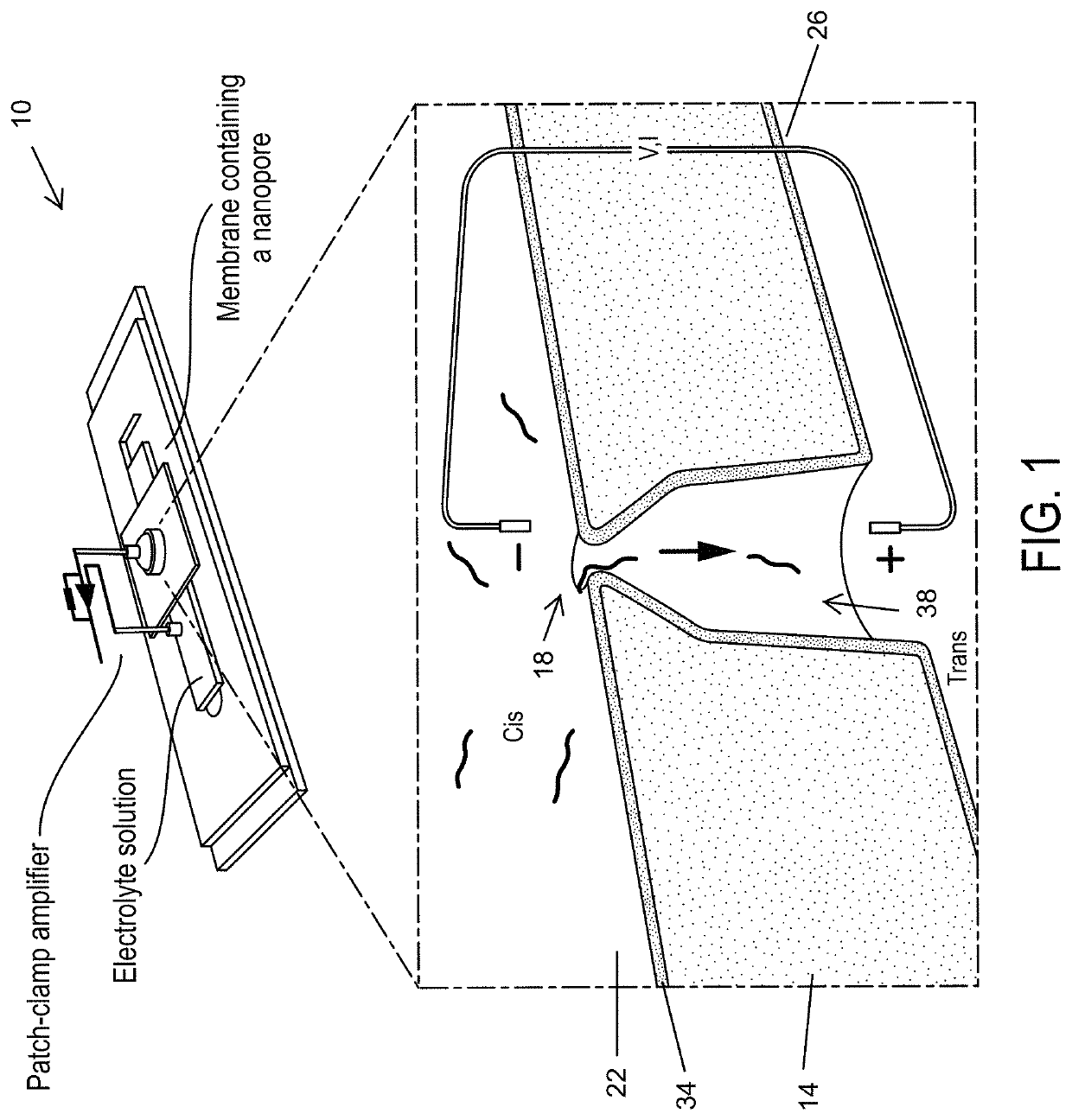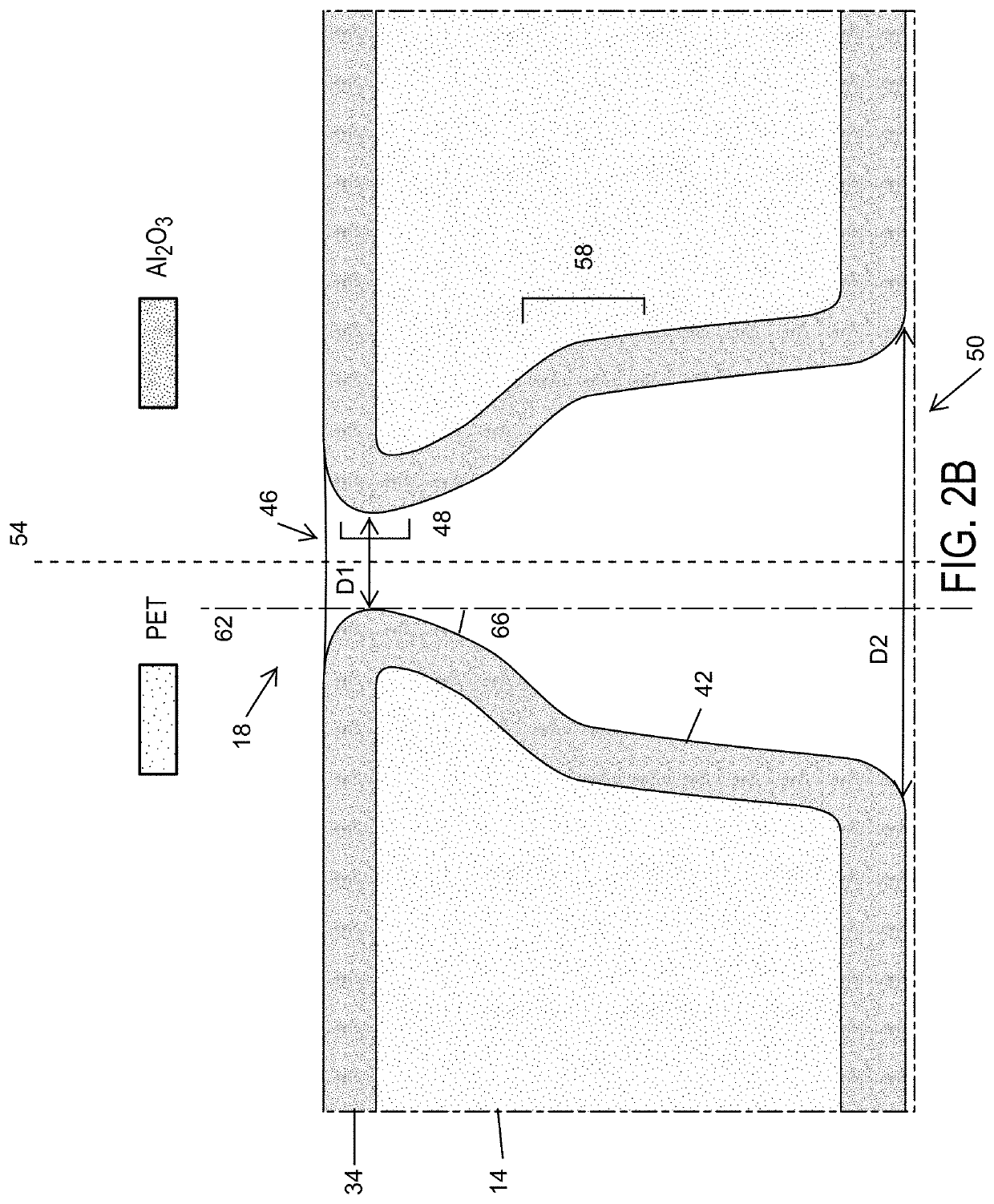Systems and methods for separating, detecting, and quantifying a target polynucleotide
a target polynucleotide and detection system technology, applied in the field of systems and methods for separating, detecting, and quantifying single stranded polynucleotides, can solve the problems of reducing current signal, not improving signal-to-noise ratio, and excessive short translocation time to identify, so as to slow down dna translocation, slow down the translocation, and simple tuning
- Summary
- Abstract
- Description
- Claims
- Application Information
AI Technical Summary
Benefits of technology
Problems solved by technology
Method used
Image
Examples
example 1
[0072]Fabrication of Al2O3-Coated Polymeric Nanopore
[0073]The 12 μm thick polyethylene terephthalate (PET) foils were irradiated with single swift heavy ions (Au) with energy of 11.4 MeV per nucleon at the GSI in Darmstadt, Germany. An irradiated foil was subsequently etched at room temperature (295 K) by an asymmetric etching method, where the foil was mounted between two isolated containers that contained an etchant solution of 2.5 M NaOH in 1:1 MeOH / H2O and a stopping solution of 1 M HCOOH and 1 M KCl aqueous solution, respectively. The etching process started from one side of the PET foil, but was immediately stopped when etched through, and as a result, a single trumpet-like nanopore was formed on each irradiated PET foil. Bullet-shaped nanopores with different half cone angles were fabricated following an extended asymmetric etching procedure. To improve the control of nanoscale morphology at the nanopore tip, the track-etched polymer nanopore etching method was optimized as s...
example 2
[0091]Highly Controllable and Reproducible Fabrication of Al2O3 Coated Polymeric Nanopore for Sensitive miRNA Detection.
[0092]Highly controllable fabrication of Al2O3 coated polymeric nanopore with reproducible shape and size, assists the nanopore-based miRNA quantification with optimal throughput and sensitivity. The systems and methods of the invention represent a new strategy based on electric field leakage to slow down the transport of miRNA as illustrated in FIG. 2A. The degree of electric field leakage across the nanopore tip is controlled by the cone angle. Example 1 demonstrates that the as-prepared nanopores with similar overall cone angles (obtained by using similar etching time after breakthrough) show significant differences in sensing performance in terms of event frequency. Only less than 10% nanopores are capable of high-throughput sensing with reproducible event frequency under the same target concentrations. These performance variations are due to a lack of nanoscal...
PUM
| Property | Measurement | Unit |
|---|---|---|
| inner diameter | aaaaa | aaaaa |
| inner diameter | aaaaa | aaaaa |
| inner diameter | aaaaa | aaaaa |
Abstract
Description
Claims
Application Information
 Login to View More
Login to View More - R&D
- Intellectual Property
- Life Sciences
- Materials
- Tech Scout
- Unparalleled Data Quality
- Higher Quality Content
- 60% Fewer Hallucinations
Browse by: Latest US Patents, China's latest patents, Technical Efficacy Thesaurus, Application Domain, Technology Topic, Popular Technical Reports.
© 2025 PatSnap. All rights reserved.Legal|Privacy policy|Modern Slavery Act Transparency Statement|Sitemap|About US| Contact US: help@patsnap.com



